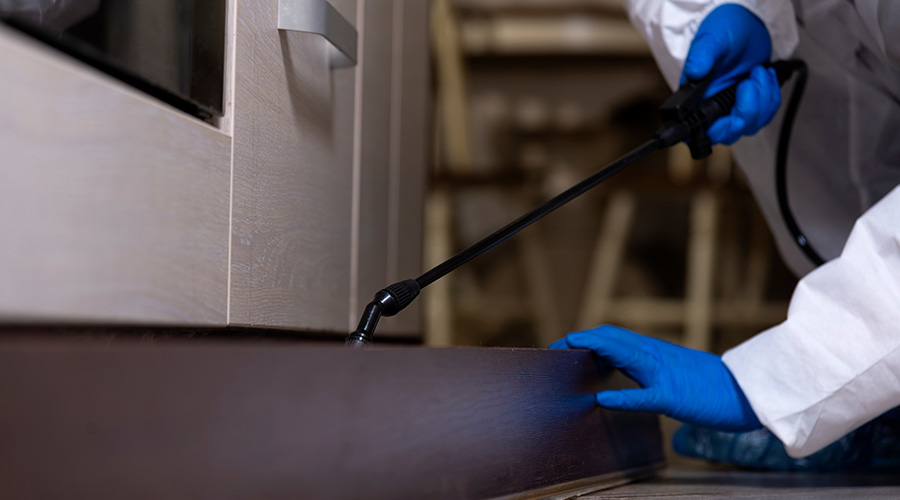Selling Maintenance to CEOs
Maintenance strategies — whether preventive, predictive or reliability-centered — require a manager’s planning and support to succeed
Maintenance and engineering managers are under increasing pressure to improve the performance of their operations while controlling costs. As a result, maintenance strategies are shifting away from traditional programs of reactive and preventive maintenance (PM) to those that are predictive and reliability centered.
While most managers understand the benefits of these strategies, they too often fail to convince their organizations’ senior executives of the need to change the way they do business. Managers are even less successful in convincing facilities executives to provide the funding needed to revamp their operations.
Part of the problem is that executives perceive all maintenance to be the same. As they too often see it, the strategy is simply to fix things as quickly and inexpensively as possible. But as managers know, there is much more to maintenance.
As a result, a manager’s job must start with identifying the maintenance strategy that is best suited for his or her organization, then developing a plan to seek the financial support and backing to implement that plan.
Defining Strategies
According to surveys of maintenance managers, the most widely used maintenance strategy today is reactive maintenance. Systems run until they break, at which point technicians repair or replace them. Reactive maintenance has the lowest apparent cost and staffing requirement, and its startup costs are low. But over time, reactive maintenance tends to have higher total costs, due to system downtime, shortened equipment service lives, and increased labor costs due to unplanned outages.
PM strategies are becoming a more popular alternative to the reactive maintenance. PM programs are constructed around a series of tasks performed on a schedule, which managers can base on the calendar or on the actual run-time of equipment.
The goal of any PM strategy is to minimize the rate of deterioration of building systems and components. On the average, PM programs can reduce total maintenance costs by 12-18 percent.
Managers and executives must realize, though, that even the most comprehensive PM program can only reduce equipment failures. It cannot eliminate them.
The biggest drawback of PM programs is their labor requirement. More maintenance activities translates into increased labor requirements. While managers can schedule many maintenance tasks during normal working hours and reduce the need for overtime, all of the maintenance must be performed. And since those tasks are performed on a schedule, there is no guarantee that they are performed when the equipment actually needs them.
Predictive maintenance (PdM) strategies take maintenance programs to the next level. The goal of PdM programs is to extend the service lives of systems and components by early detection and elimination of factors that contribute to deterioration. This approach is different from that of PM programs in that the performance of maintenance tasks is based on actual conditions, not a calendar or run time.
The benefits of PdM include increased equipment service lives, reduced breakdown frequency, and lower labor and material costs. In fact, PdM can reduce total maintenance costs by an average of 25 percent. Its biggest drawback is up-front costs. Operations implement a PdM program must invest heavily in diagnostic equipment and employee training.
Another enhanced maintenance strategy is one that is reliability centered. Reliability-centered maintenance recognizes the fact that it is impossible to keep all pieces of equipment maintained at peak levels all of the time.
Under a reliability-centered program, maintenance efforts focus on components that are the most critical to the operation and, in the event of a failure, would cause the most problems for operations, compromise safety, or result in major repair costs. Reliability-centered maintenance uses many of the same techniques used in PdM but does not apply them equally to all systems and components. Reliability-centered maintenance makes extensive use of non-destructive testing procedures — including oil sampling, vibration analysis, ultrasound, thermography, and insulation resistance — to determine the level of deterioration occurring within the equipment.
Properly applied, reliability-centered maintenance can be the most efficient and cost- effective maintenance program:
-
It greatly reduces the probability of sudden failures of systems and components.
-
Maintenance attention goes to those areas most important to the operation of the facility.
-
Managers can use maintenance funds where they will have the biggest impact.
-
These programs have the same or slightly higher startup costs and training requirements.
Presenting the Plan
All organizations resist change, and when that change drives up costs, particularly in the short run, that resistance can be overwhelming. So if manager are to succeed in convincing executives of the need to change the maintenance strategy, they must present a plan that addresses the concerns of those who will provide the funding. The first steps in the process:
-
Identify the current maintenance practices and their impact on facility operations, the total cost of maintenance, and the service life of building systems and components.
-
Present specific examples of the ways that current maintenance practices might appear to cost less initially but actually cost more in the long run.
-
Quantify losses due to service interruptions, after-hours service calls, and early component failures.
-
Perform a life-cycle analysis to show the total cost of ownership for a system or component under current practices and that cost under an improved maintenance strategy. It is important to establish a sense of urgency for the program — not a false one, but one that clearly shows how operations can improve.
Next, the plan must create a vision of where a change will take the organization. Managers must set goals for implementing the new strategy and its benefits to the organization.
A phase-in schedule should show short-term goals that can be achieved realistically in one year or less and long-term goals that might take up to five years to accomplish. All goals must be clearly measurable so all parties involved will know where the program is heading and when it is succeeding.
Next, managers must develop a list of critical equipment within the facility, equipment whose failure would result is a disruption of services or other major loss. Drawing on the equipment’s maintenance history and the knowledge of the maintenance technicians who work with that equipment, managers can determine the probability of failure. Identify the tests to perform and their costs under the new maintenance strategy to reduce the risks of failure. Show how the change will impact the life-cycle cost of the equipment.
Next, create an implementation plan. Changing maintenance strategies will have a significant start-up cost. Managers will have to buy new equipment, hire additional maintenance technicians, train them in new maintenance procedures, an purchase and install new software.
These changes will take time, and during this time, the number of breakdowns that the maintenance force must respond to will not decrease very rapidly. So it is important that managers develop a plan for phasing in the new maintenance strategy.
The effort should start with a system that is critical to the facility’s operation. Ideally, this system will have a history of problems of which executives are aware. Taking this approach will help them see the results of the program and will help gain their support for the funding needed to expand the program to other areas of the facility.
Tracking Progress
It is important to continue promoting the program even after implementation. Executives will always look for ways to minimize costs, particularly in the short-run.
The results of the change in maintenance strategies will be subtle at first. Outages that don’t happen will go unnoticed simply because they did not happen, and extending the service life of equipment is a long-term change that will take years before it shows up — or rather, does not show up — in a maintenance budget. While these changes slowly take place, executives will see the rise in maintenance costs that result from program start-up.
Without lobbying from maintenance managers, chances are that the executives will question the value of a program that seems to increase costs with no visible benefits. Managers must keep attention focused on the program.
As pilot programs end, present their results to executives, and report annually on progress towards reducing equipment failures and outages, quantifying any savings that result.
Maintenance strategies — whatever their foundations and goals — are essential for the success of any organization. But they are in constant competition with other programs for funding. Without regular demonstrations of progress from managers, they will wither on the vine from funding cuts.
James Piper is a national consultant with more the 25 years of experience in facility maintenance and management issues. He is based in Bowie, Md.
Related Topics:











